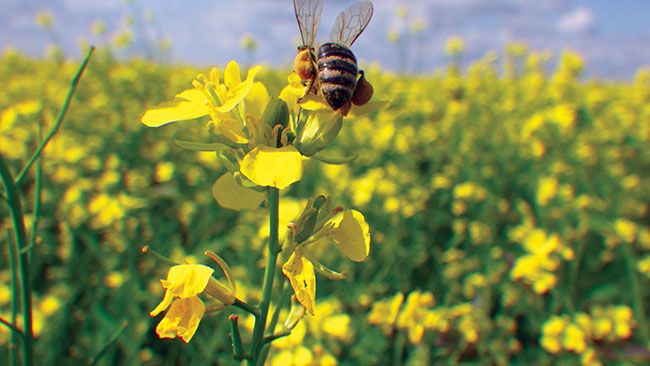
Features
Diseases
Pest Management
PIC: Heating things up with mustard improves biofumigation
September 15, 2023 By Rosalie I. Tennison, courtesy of Potatoes in Canada
 A bee visits a mustard field. Photo courtesy of Zack Frederick.
A bee visits a mustard field. Photo courtesy of Zack Frederick. Inconsistent results from using biofumigation to control Verticillium wilt and other soil-borne pathogens in potatoes has soured some growers on using this viable disease control option. Growing a non-money-making crop in the hopes the cost will be recouped the following year with lower pest and disease pressure and improved yields puts some growers off attempting the procedure. However, new research in Manitoba is showing that using mustard for biofumigation can be very successful. The tactic to achieve success is to seed a variety of mustard proven to offer the best fumigant properties and to faithfully follow the guidelines developed by researchers.
For basic biofumigation success, growers need a crop that produces a high amount of biomass in a short growing period and that will offer the highest output of fumigant properties once incorporated into the soil. Many crops, such as sorghum, buckwheat, rapeseed and others, can be used as cover crops for biofumigation. But the most successful for potato growers is mustard. |READ THE FULL STORY
Print this page